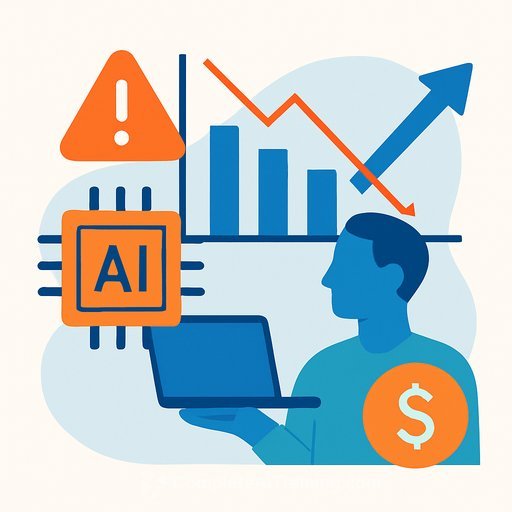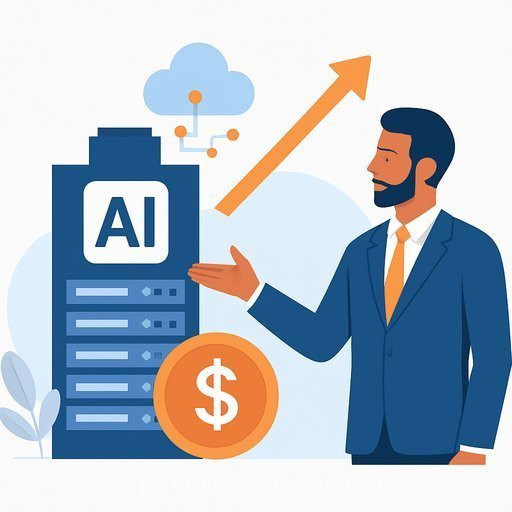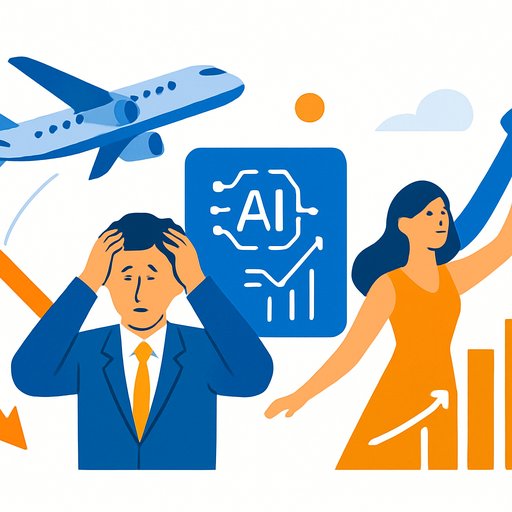Using CRM Pricing Models in the AI Era: What's Going to Change?
AI agents are pushing CRM from a system of record to a system of action. That shift breaks the logic of flat per-seat pricing and pushes vendors and customers to price the actual work done and outcomes achieved.
As one industry analyst put it, "fixed per-seat per-user price doesn't make as much sense" when the system-not the human-drives measurable outcomes. For sales leaders, that means new math for forecasting, budgeting, and headcount planning.
Why Per-Seat Pricing Starts to Crack
- AI agents do measurable work: generate meetings, resolve cases, qualify leads, draft proposals.
- Value now varies by volume, complexity, and outcomes-not by how many humans have logins.
- 24/7 "digital workers" don't clock out, so usage and value can spike beyond seat counts.
The New Pricing Playbook
- Consumption/Credit-based: Pay for tokens, actions, or "credits" used by AI features.
- AI Worker (agent) pricing: Pay per digital worker performing defined tasks.
- Outcomes/Value-based: Tie price to volumes and complexity (e.g., per meeting set, per case resolved, percentage of processed revenue) - see an overview of value pricing in HBR.
- Hybrid: Keep core seats for humans, add credits or outcome fees for AI work.
Vendor Moves to Watch
- Salesforce: A "credits" approach (e.g., flex/consumption) lets customers shift spend from human seats to AI capacity over time.
- HubSpot: Experiments with low-cost "core users" and broad access, leaning into consumption as value grows. See current pricing at HubSpot.
- Smaller players: Customer success and support platforms are testing bold outcome-based models because they can move faster.
Most vendors still sell per seat today because it's predictable. But expect a steady shift to action- and outcome-linked pricing while renewals keep the seat count alive for now.
What This Means for Sales Leaders
- Budget by work, not users: Compare monthly AI spend to the cost of an SDR or BDR for the same outcomes (meetings set, SQLs, pipeline created).
- Set outcome contracts: Tie AI pricing pilots to clear targets: cost per qualified meeting, cost per opportunity created, win-rate lift, cycle time reduction.
- Plan headcount shifts: AI can "rationalize spend" by reducing repetitive tasks. Reinvest in higher-impact roles (enterprise hunting, account expansion).
- Forecast differently: Model consumption spikes around campaigns, seasonal peaks, and product launches.
How to Pilot Without Guesswork
- Pick one job-to-be-done: e.g., AI SDR for inbound, or AI case triage in support.
- Define guardrails: Cap credits, set per-outcome ceilings, and require human review for edge cases.
- Run a 60-90 day cohort: Shadow first, then partial automation, then full automation if metrics hold.
- Measure hard ROI: Compare baseline vs. AI period on cost per outcome, pipeline created, AHT, CSAT, and revenue influence.
Pricing Benchmarks You Can Track Now
- Sales: Cost per qualified meeting, cost per opportunity, pipeline per dollar of AI spend, cycle time to first meeting.
- Support/Success: Cost per resolved case, AHT reduction, deflection rate, renewals influenced per dollar of AI spend.
- RevOps: Forecast accuracy changes, CRM hygiene (duplicate reduction, field completion), quote turnaround time.
Risks and How to Limit Them
- Unpredictable bills: Use consumption caps and step-up pricing tiers.
- Quality drift: Add human QA checkpoints and sample reviews by segment and channel.
- Over-automation: Keep humans on complex, high-stakes interactions and accounts.
- Vendor lock-in: Start with pilots and short terms before committing to outcome-sharing percentages.
Where This Is Headed
As AI agents improve, more work shifts from people to software. Some organizations will reduce human seats and fund AI credits or outcome fees instead, especially for repetitive tasks.
The winners will set clear outcome metrics, cap risk during pilots, and shift spend gradually as results prove out.
Practical Next Steps
- Audit your top 5 repeatable sales and support workflows for AI handoff potential.
- Pick one pricing model to pilot (credits, per agent, or outcome fee) and lock a clear success metric.
- Rework comp and KPIs so AI-driven outcomes don't conflict with human incentives.
Level Up Your Team's AI Skills
If you're standing up AI agents in CRM, training matters. Explore role-based AI courses and certifications to get your team productive fast:
Bottom Line
Per-seat pricing won't vanish overnight, but AI is redefining how value is created and measured in CRM. Start paying for outcomes where it makes sense, keep safeguards in place, and let proven results guide how quickly you shift your spend.
Your membership also unlocks:






